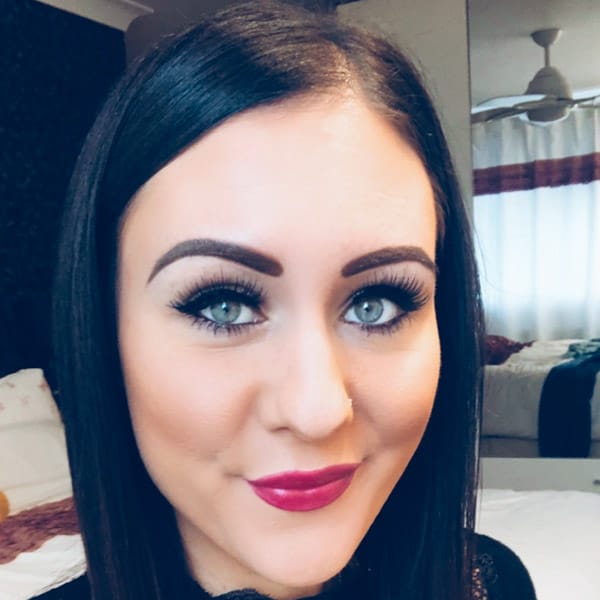Katie’s story
On the 13th June 2017, I went off to a routine eye appointment that I attended every two years. I thought absolutely nothing of it as I drove there, but thought I had better mention to the optician that I was struggling to focus in low lighting and it was taking longer for my eyes to adjust to things further away, so maybe I needed some glasses.
Once at the opticians, everything seemed normal. He asked me if the lenses he was holding up to my eyes were helping and I kept saying everything still looked the same. He carried on and after a couple of minutes said he was going to take some pictures of the backs of my eyes, as I was over 30 and he needed them for his records. He stayed very calm and carried on as normal and still I thought nothing of it. I sat outside the optician’s room while he loaded the images he had taken onto his computer. He called me into the room and asked me to sit down. I started to feel uncomfortable like something was wrong, and at that moment he asked me to look at the pictures. He told me to try not to worry, but that there was a build-up in the back of my eye and he showed me the picture. He said he thought it may be fluid. He then told me to look at the other eye picture and said unfortunately it was also in that eye too. I remember just sitting back down and staring at the screen in disbelief and felt like I couldn’t breathe.
He told me he would send an urgent referral to the hospital and to let him know how I got on. I walked out of the door in an absolute state of shock. I just drove to my husband’s work and cried. I rang my mum and she told me to come home and that she would take me to eye casualty. Once at eye casualty, I had various tests but nobody could tell me what it was. I remember just being in such a state of shock.
Going to hospital three days later was horrible. I had so many tests and so many people looked in my eyes. After around four hours, I got called into a room to see the consultant he sat me down and told me that unfortunately I have Stargardt’s. I had never even heard of it. I didn’t know how much vision I was going to lose or what part of my vision it would affect. I was then referred to Moorfields for an official diagnosis.
I had to wait four months for my Moorfields appointment. I wasn’t given any information on my condition, so in those four months I read nearly everything I could online. I learnt that it would be my central vision affected and I would lose the ability to recognise faces, read, watch TV, drive – anything that required fine detail. Since my diagnosis I also discovered my blind spots. I always think “how could I have not noticed them?” and “how did I think it was normal?” But when you have nothing to compare it with and nothing has ever been flagged up previously, you just make do and get on with things thinking it’s how everyone else sees.
Because vision loss is invisible to others, it is so misunderstood. People don’t realise the mental side of it, how it affects you every day. It is also the first thing you see when you wake up and the last thing you see when you go to bed. I never in a million years thought I would be diagnosed with eye disease in my 30s, especially a genetic one.
I try and cope with my diagnosis by raising awareness for my condition, trying to help people understand young people can have eye disease and often we still look the same as everyone else. I don’t think too far ahead and set myself little monthly goals and enjoy the vision I have left. I also felt very alone upon my initial diagnosis, so decided to blog my journey and life whilst living with Stargardt’s at my website https://katiesvision.co.uk/.

